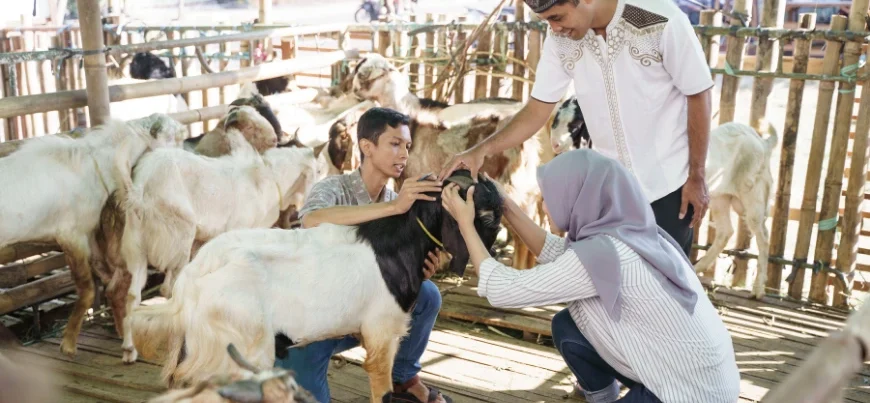
Eid al Adha (Eid Qurban): The Festival of Sacrifice
1. Introduction
Eid al-Adha, also known as Eid Qurban, is one of the two major Islamic festivals celebrated worldwide. It commemorates the profound act of obedience and devotion by Prophet Ibrahim (Abraham, peace be upon him), and it holds deep spiritual, social, and religious significance in Islam.
2. Meaning and Names of Eid ul Adha
-
Eid al-Adha: Literally means Festival of Sacrifice.
-
Eid Qurban: “Qurban” is derived from the Arabic word qurbān, meaning sacrifice or offering.
-
It is also referred to as:
-
Bakra Eid (in South Asia)
-
Kurban Bayramı (in Turkey)
-
Hari Raya Haji (in Southeast Asia)
-
3. Historical Background
The Story of Prophet Ibrahim and Ismail (peace be upon them)
The essence of Eid al-Adha lies in a powerful story of faith:
-
Prophet Ibrahim (AS) saw in a dream that Allah commanded him to sacrifice his beloved son, Ismail (AS).
-
Trusting the command as divine revelation, he prepared to carry out the sacrifice.
-
Ismail (AS), also full of faith, accepted the will of Allah.
-
Just as Ibrahim was about to sacrifice his son, Allah replaced Ismail with a ram, signifying that it was a test of obedience.
-
Allah was pleased with their submission, and this event became symbolic of the spirit of complete devotion to the Creator.
4. Significance of Eid al-Adha
-
Spiritual Significance: Demonstrates submission to Allah’s will, trust in divine wisdom, and readiness to sacrifice for faith.
-
Commemoration: Remembrance of Prophet Ibrahim’s devotion and Allah’s mercy.
-
Unity and Brotherhood: Muslims around the world celebrate together, enhancing the sense of global Muslim unity.
-
Charity and Sharing: Encourages generosity, helping the poor and needy.
5. When is Eid al-Adha Celebrated?
-
Eid al-Adha falls on the 10th day of Dhul-Hijjah, the last month of the Islamic lunar calendar.
-
It marks the culmination of Hajj, the annual pilgrimage to Mecca.
-
The date varies each year according to the lunar calendar, shifting approximately 10–11 days earlier each Gregorian year.
6. Rituals and Practices
A. The Eid Prayer (Salat al-Eid)
-
Performed in congregation, typically in open fields or mosques.
-
Held after sunrise on the morning of Eid, before the slaughter.
-
Includes two rakats (units of prayer) followed by a khutbah (sermon).
B. The Sacrifice (Qurbani)
-
A central ritual where an animal (usually goat, sheep, cow, or camel) is sacrificed.
-
Reflects Prophet Ibrahim’s willingness to sacrifice his son for Allah.
-
Who must sacrifice:
-
Adult Muslims who meet the nisab (minimum wealth threshold).
-
-
Conditions:
-
The animal must be healthy, of a certain minimum age, and free of defects.
-
Sacrifice is done with the name of Allah invoked (saying Bismillah, Allahu Akbar).
-
-
Distribution of meat:
-
One-third for the family.
-
One-third for relatives and friends.
-
One-third for the poor and needy.
-
C. Sunnah Acts of Eid Day
-
Performing ghusl (ritual bath) before prayer.
-
Wearing one’s best clothes (often traditional garments).
-
Using miswak (tooth-stick) for hygiene.
-
Reciting the Takbirat from the dawn of 9th Dhul-Hijjah until the 13th.
Allahu Akbar, Allahu Akbar, La ilaha illallahu Wallahu Akbar, Allahu Akbar wa lillahil-hamd.
7. Hajj and Its Connection
-
Eid al-Adha coincides with the conclusion of Hajj, the fifth pillar of Islam.
-
On the Day of Arafah (9th Dhul-Hijjah), pilgrims gather on Mount Arafat, praying for forgiveness and mercy.
-
On 10th Dhul-Hijjah, after completing key rituals, pilgrims perform Qurbani, followed by shaving the head (for men) and Tawaf al-Ifadah around the Kaaba.
8. Global Celebrations and Traditions
While the core religious practices remain the same, cultural expressions differ:
Middle East
-
Elaborate family gatherings.
-
Traditional dishes like mansaf, kebabs, and maamoul.
South Asia
-
Called Bakra Eid due to goat (bakra) being the common animal.
-
Dishes like biryani, nihari, and kebabs are popular.
-
Children receive gifts or “Eidi”.
Africa
-
Communal prayers and feasting.
-
Emphasis on charity and supporting neighbors.
Western Countries
-
Muslims balance religious rituals with work obligations.
-
Local mosques organize Eid events, barbecues, and community Qurbani projects.
9. Charity and Social Responsibility
-
Eid al-Adha emphasizes supporting the underprivileged.
-
Many Muslims contribute to local or international Qurbani programs, ensuring even the poor in remote regions get to enjoy meat.
-
Acts of kindness, forgiveness, and reconnection with estranged family or friends are encouraged.
10. Modern-Day Qurbani Services
With technological advancements:
-
Many Muslims now perform online Qurbani through trusted organizations.
-
Services ensure Shariah compliance and provide proof via photos or videos.
11. Common Misconceptions
-
Not Just About Meat: Eid al-Adha is about sacrifice, devotion, and compassion—not just feasting.
-
Hajj is Not Obligatory for All: While it coincides with Hajj, only those who can afford it must perform Hajj once in their lifetime.
-
Qurbani Is Not for All: Only financially capable Muslims are obligated.
12. Conclusion
Eid al-Adha is a sacred occasion that reminds Muslims of the power of faith, the beauty of submission to Allah, and the importance of sharing blessings. Whether one is offering a sacrifice, performing Hajj, or helping the needy, every act done during this time is filled with immense reward and spiritual growth.
